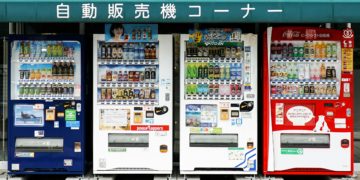Over the past couple of years, Employee Ownership Trusts (EOTs) have emerged as a viable option for UK companies. As a succession strategy, this framework offers a new avenue, allowing companies to pass ownership to employees rather than relying on traditional options like external purchasers or family succession. With the evolving economic scenario and work culture in the modern era, the EOT framework offers a unique opportunity for business owners and employees alike.
What is an Employee Ownership Trust?
An employee ownership trust (EOT) is a legal arrangement that enables businesses to transfer ownership to the employees. In this arrangement, the business owner sells a majority or all of their shares to a trust, which is held on behalf of the employees. The employees, without being shareholders of specific shares, benefit from the trust ownership through bonuses, profit-sharing and a say in the management of the business.
This structure is beneficial to both exiting entrepreneurs and employees wishing to share in the company’s success. In addition, EOTs can be tax-efficient for both the seller and the employees, making them a popular option for succession planning.
Why Businesses are Turning to Employee Ownership Trusts
The popularity of EOTs derives from the fact that it assists in creating a sustainable structure of ownership while giving employees a stake in the company’s future. For business owners, the transition to an EOT can be a way of securing the long-term success of the business while preserving the established culture of the firm. For employees, the possibility of shared ownership enhances a feeling of responsibility and interest in the company’s performance.
Another key driver of the growth of EOTs is the growing recognition of the need for employee well-being and job security. Employees with a stake in the business are more likely to be motivated and committed, understanding that their efforts directly impact their financial future. Moreover, businesses structured as EOTs also enjoy improved staff retention and productivity.
The Benefits of an EOT for Business Owners
The other major advantage of choosing an Employee Ownership Trust as a succession planning model is the assurance of tax relief. Owners selling their interests to an EOT qualify for Capital Gains Tax (CGT) relief, which means they can exempt the sale of their business from taxation. This renders the model highly attractive to business owners looking to retire or sell their businesses without the burden of high taxation.
Additionally, the EOT model can help preserve the legacy of a company by maintaining its dominant culture and values. The majority of business owners prefer this approach as it ensures that their employees, who have contributed to the company’s success, are rewarded and have a say in its future.
How the Employee Ownership Trust Works
The setting up of an Employee Ownership Trust begins with the setup of a trust, which then purchases the shares from the business owner. This is carried out under the watchful eye of trustees, who are usually appointed by the business owners and can also include employees. The trust holds the shares for the benefit of the employees and the company’s profits are distributed among them in the form of bonus schemes and other monetary incentives.
It must be noted that although the employees lack personal shares, they are compensated by the business ownership through profit-sharing plans. The plan provides employees with a genuine stake in the financial success of the business, which makes them feel more connected to the company’s goals.
Examples of EOT Companies in the UK
Several UK businesses have effectively implemented the Employee Ownership Trust model, proving its viability in practical situations. A good example is John Lewis, the UK’s biggest employee-owned company. Although John Lewis has a different ownership model, it has been a strong proponent of employee ownership for many years and its success has encouraged numerous companies to consider adopting similar models.
Another example is Aardman Animations, the makers of Wallace and Gromit. The company transitioned to employee ownership in 2013, when the original members voted to sell the company to an EOT. This allowed the employees to retain a sense of ownership and responsibility while delivering long-term security for the creative studio.
Other businesses, like Twelve Trees and Dove and Boweevil Co., have also followed the EOT model, offering further examples of the model’s adaptability across a variety of industries, from creative endeavours to food production.
Considerations for Transitioning to an EOT
While the benefit of an Employee Ownership Trust is clear, its implementation does require careful planning. Business owners must work with financial and legal advisors to ensure the trust is set up correctly and the process of selling shares to the trust is done in a way that is fair to both the seller and the employees.
The process may also involve governance reforms within the company, as the new trustees must be appointed and assigned the task of running the trust. The employees may also need to be educated on the running of the new entity because their status within the firm will change in terms of ownership and decision-making powers.
The future of Employee Ownership Trusts looks promising, with more businesses looking for ways to adapt to modern demands. As the economy continues to change and more employees want job security and ownership, the EOT model is a viable option.
| Order ID | 54775 | |
| Orderlink ID | 234979 | |
| Link | todaynews.co.uk | |
David Prior
David Prior is the editor of Today News, responsible for the overall editorial strategy. He is an NCTJ-qualified journalist with over 20 years’ experience, and is also editor of the award-winning hyperlocal news title Altrincham Today. His LinkedIn profile is here.











































































